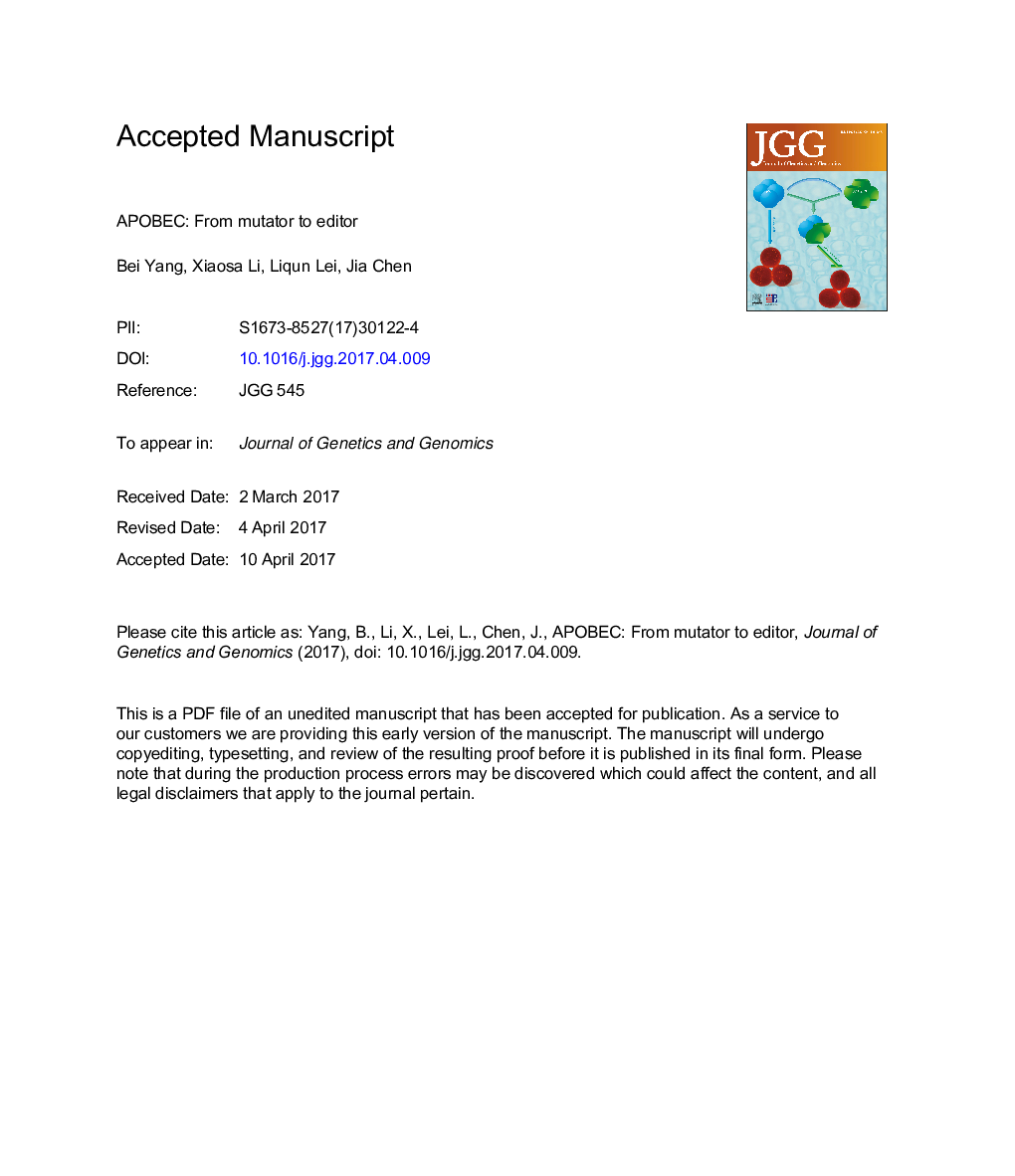| Article ID | Journal | Published Year | Pages | File Type |
|---|---|---|---|---|
| 5585828 | Journal of Genetics and Genomics | 2017 | 57 Pages |
Abstract
APOBECs (apolipoprotein B mRNA editing enzyme, catalytic polypeptide-like) are a family of cytidine deaminases that prefer single-stranded nucleic acids as substrates. Besides their physiological functions, APOBEC family members have been found to cause hypermutations of cancer genomes, which could be correlated with cancer development and poor prognosis. Recently, APOBEC family members have been combined with the versatile CRISPR/Cas9 system to perform targeted base editing or induce hypermutagenesis. This combination improved the CRISPR/Cas9-mediated gene editing at single-base precision, greatly enhancing its usefulness. Here, we review the physiological functions and structural characteristics of APOBEC family members and their roles as endogenous mutators that contribute to hypermutations during carcinogenesis. We also review the various iterations of the APOBEC-CRISPR/Cas9 gene-editing tools, pointing out their features and limitations as well as the possibilities for future developments.
Keywords
Related Topics
Life Sciences
Biochemistry, Genetics and Molecular Biology
Developmental Biology
Authors
Bei Yang, Xiaosa Li, Liqun Lei, Jia Chen,
